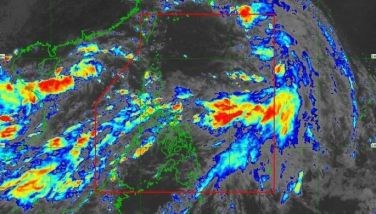Mindanao mountain still harbors threatened wildlife species
LOS BAÑOS, Laguna – Mt. Malindang, the highest mountain in western Mindanao, still harbors many wildlife species now threatened in other environs.
This was found in a study done under a program funded by the Netherlands Ministry for Development Cooperation (DGIS) through the Los Baños-based Southeast Asian Regional Center for Graduate Study and Research in Agriculture (SEARCA).
Hosted by the government and the University of the Philippines Los Baños (UPLB) campus, SEARCA, currently headed by Director Arsenio Balicasan, is one of the 15 “centers of excellence” of the Southeast Asian Ministers of Education Organization (SEAMEO).
The “Biodiversity Research Program (BRP) for Development in
Also involved were Philippine research and academic institutions (particularly those in
BRP aimed “to make biodiversity research responsive to real-life problems and development needs of the local communities by introducing a new mode of knowledge generation for biodiversity management and conservation, and to strengthen the capacity for biodiversity research and decision-making by empowering the local research partners and other local stakeholders.”
The program’s outputs included a booklet titled “Vertebrate Fauna of Mt. Malindang.”
Complete with colored photographs of fauna, the 87-page volume now serves as a handy field guide for those who want to study the wealth and diversity of wildlife in the still lush 2,175-meter high mountain in the Zamboanga peninsula.
“It is hoped that this simple publication will serve as a quick field reference, as well as enhance knowledge and enjoyment of the
Involved in the production of the scientific publication were Dr. Mariliza Ticsay, overall coordinator; Olga Nuneza, Apolinario Alicante, Marie Rosellyn Calizo-Enguito, Fritzie Ates, Angela Grace Toledo-Bruno, Yunalyn Labajo, Sharon Dejarme, authors; Carmillo Comilap, Nerlito Sencio, Ricardo Villamino, Reneboy Recolito, local researchers; Ronan Zagado, editing/layout; Crino Fule, production coordinator; and Gerlie Rivera, production assistant.
“Our two-year study (2003-2005) recorded 257 species of vertebrates (26 amphibians, 33 reptiles, 162 birds, 19 volant mammals, and 17 non-volant mammals),” it reported. (Volant means winged or capable of flying).
Twenty-five threatened species were recorded, comprising nine amphibians, nine birds, four non-volant mammals, and three volant mammals.
The program team further noted that the level of endemism (restriction or peculiarity to a locality or region) was also high: 71 percent for non-volant mammals, 48 percent for reptiles, 47 percent for volant mammals, 42 percent for amphibians, 41 percent for birds.
Of the 26 species of amphibians found in
Scientific records show that the Philippine amphibian fauna consists of caecilians and frogs.
Caecilian is a gray worm-like burrowing amphibian without any indication of having limbs. It is found in
Frogs and toads (anurans) constitute the majority of Philippine amphibians.
“The latest tally of birds in the country stands at 576 species, 395 of which are resident breeders (meaning they nest and incubate their eggs in the country), in contrast to non-resident breeders, which are wintering migratory birds or vagrants,” the program team said.
A total of 162 species of birds are found in
Philippine reptilian fauna is composed of terrestrial lizards (124 species), terrestrial snakes (106 species), marine snakes (915, terrestrial turtles (six), marine turtles (five), and crocodiles (two).
Thirty-three species were recorded in
- Latest
- Trending































